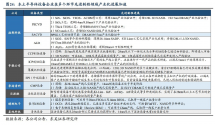Wow, this looks huge! Does it mean that we don't need Tin droplet to generate the laser (which is incredibly complex).
The abstract is light on the details without getting at the full paper, but my guess is not in a time frame before China succeeds in productionization of LPP or synchron SSMB light sources. Getting a EUV light source for lithography is a lot more than generating some EUV photons - it requires generating the light at a high enough power level, consistently, reliability and at a scale that can be used in a commercial production environment.
As with most things in science, it's usually the ability to move from lab to real world that makes or breaks cutting edge scientific discoveries(which is what this is)

